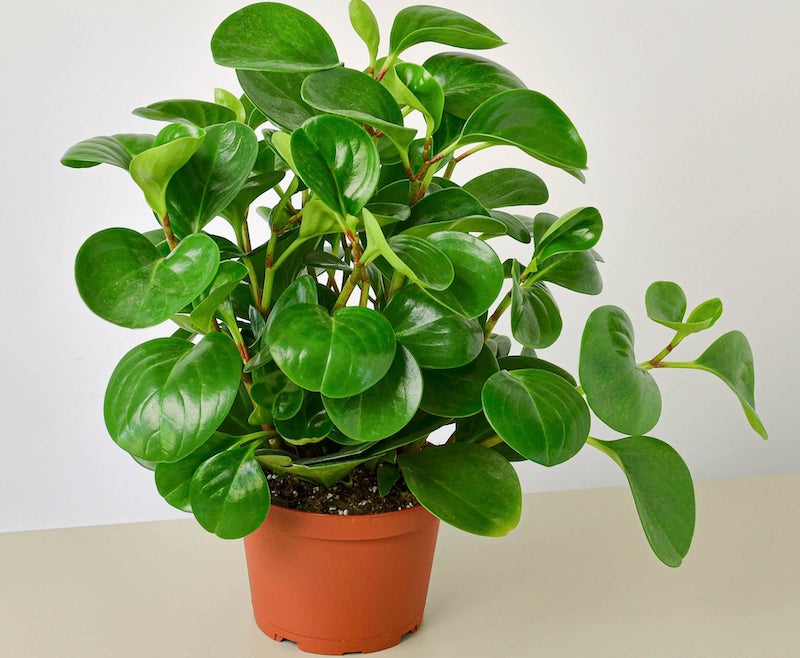Peperomia is a beautiful, leafy houseplant that does not require much care. It is not a heavy feeder, but appreciates regular fertilizing during its growing season. Over time, watering leaches nutrients from the soil of houseplants, and fertilizing replenishes those nutrients so the plant can stay healthy. Fertilizing Peperomia is thankfully not complicated and can be accomplished following the steps below.

Why Fertilize Peperomia
The primary reason to fertilize any plant, including Peperomia, is to restock its soil with the nutrients the plant has used up. The three most essential nutrients are nitrogen, phosphorus, and potassium. How do these three macronutrients support Peperomia? Nitrogen supports plant growth; phosphorus encourages root growth and improves a plant’s ability to transport energy; potassium supports the movement of water and nutrients through the plant, enhances hardiness, and encourages flowering. Fertilizers will often highlight the amounts of these three nutrients with an N-P-K ratio included on the label.
The type of fertilizer isn’t the only important factor. A proper feeding schedule is also essential. Do not fertilize Peperomia during its dormant period. Since it is not actively growing during this period, feeding it may cause damage, such as fertilizer burn.
How Often To Fertilize Peperomia
During its growing season, feed Peperomia a balanced houseplant fertilizer. Refrain from feeding, however, during the fall and winter months. To control the amount of fertilizer available to this evergreen at any time, opt for a liquid fertilizer versus a slow-release fertilizer if your schedule allows. The administration of slow-release fertilizers is less time-consuming.

How To Tell If Peperomia Needs Fertilizer
To determine whether Peperomia needs fertilizer, examine it for symptoms of nitrogen, phosphorus, and potassium deficiencies. A lack of nitrogen interferes with chlorophyll production, so the plant begins to fade to a pale yellow, starting with the oldest leaves. A lack of phosphorus inhibits shoot growth, and leaves, beginning with the oldest, turn dark blue-green or reddish purple. Potassium supports water transport throughout the plant, so insufficient amounts cause wilting leaves and stunted growth.
Best Fertilizer For Peperomia
Peperomia is not typically a heavy feeder, but when it does need some help, this perennial benefits from being fed a balanced N-P-K fertilizer containing approximately equal parts of nitrogen, phosphorus, and potassium. Two great organic fertilizers to use are Espoma Organic Indoor! (2-2-2) liquid fertilizer and FoxFarm Grow Big - Liquid Concentrate (6-4-4). Espoma recommends mixing two teaspoons per quart of water and drenching the soil. FoxFarm recommends mixing 2-3 teaspoons of Grow Big per gallon of water. Feed one to two times per month as needed.
Peperomia Fertilizing Tips
To support Peperomia’s healthy growth, provide it with a balanced, water-soluble fertilizer twice a month during its growing season, spring and summer.
- Unlike plants grown in topsoil outside, houseplants usually require additional fertilizer.
- Feed Peperomia two times per month during the growing season.
- Peperomia may need fertilizer if stunted growth, yellowing leaves, and/or wilted foliage appear.
- Espoma Organic Indoor! (2-2-2) liquid fertilizer and FoxFarm Grow Big - Liquid Concentrate (6-4-4) are excellent choices for Peperomia.
 |
Author Suellen Barnes - Published 3-21-2023 |
